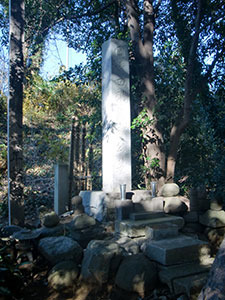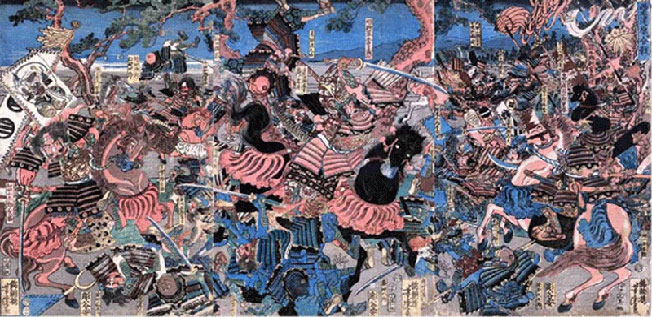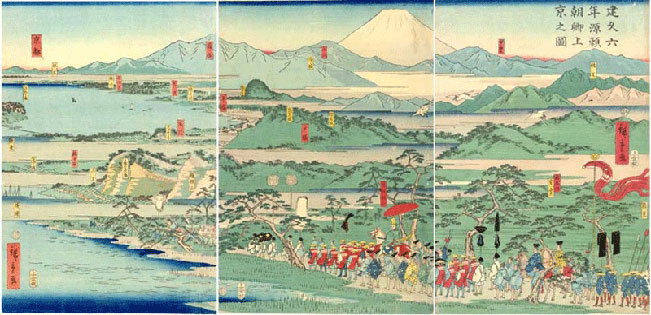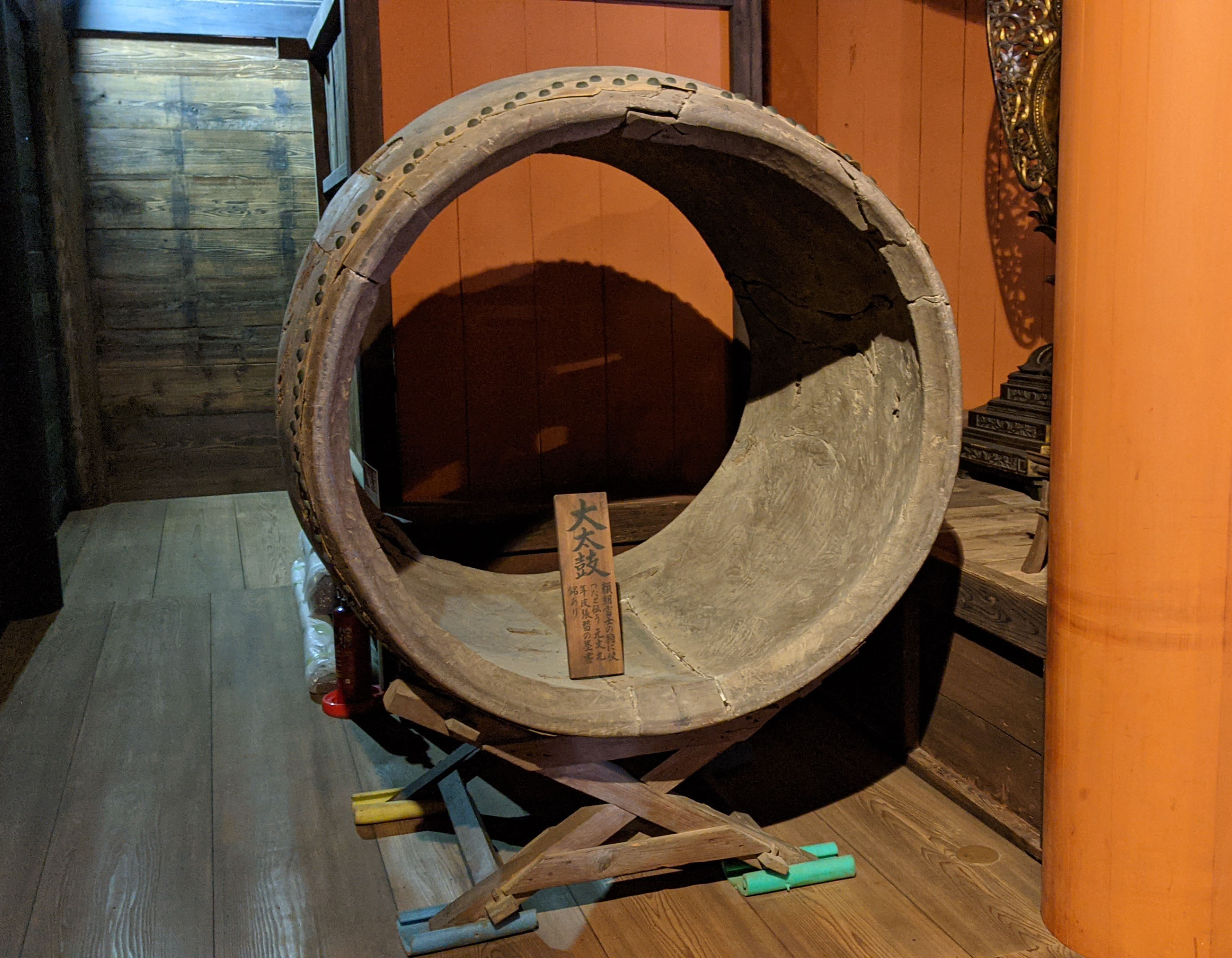公開日 2021年11月12日
Kamakura Period
Kamakura Warriors and Isehara

The tomb of Okazaki Jiro Yoshizane still remains in Okazaki, Hiratsuka.
When the signal to destroy the Heike was given, there were already military groups in Isehara. It is said that in the Okazaki area there was a fortress called Okazaki Castle, whose land area covered from the present Muryo-ji Temple all the way down to Hiratsuka. The owner of the castle Okazaki Shiro Yoshizane belonged to the Miura clan whose base was on the Miura Peninsula. He took part in the battle of Ishibashiyama together with his son Sanada Yoichi, and thus worked hard for Yoritomo to establish the shogunate, even though he was over 30 years older than Yoritomo.
Ishida Jiro Tamehisa of the same Miura clan had his base in Ishida. He participated in the army led by Minamoto no Yoritomo’s half-brothers Noriyori and Yoshitsune. He was the warrior that killed Kiso Yoshinaka, who was running away from Kyoto to the Hokuriku region. He is said to have resided on the highland to the north of Enko-in Temple, Ishida.
Between Ishida in the east and Okazaki in the south, the greater part of Isehara was occupied by the manor called Kasuya-no-sho at the end of the Heian period. Kasuya Tota Arisue was the lord of this manor.
The Kasuya family followed the Genji for a long time just as the Miura family did, although Arisue’s father sided with the Heike at the battle of Ishibashiyama. After then Arisue joined the Genji and took part in the war to destroy the Heike. After the Heike was defeated, he joined the army that Yoritomo dispatched to kill Yoshitsune. He also attended upon Yoritomo together with Okazaki Yoshizane, when Yoritomo triumphantly went up to Kyoto after the war.

- The scene in which Ishida Jiro Tamehisa was going to kill Kiso Yoshinaka is depicted in this woodblock print made in the Edo period.

- This woodblock print depicts a scene when Yoritomo went to Kyoto with his followers including Kasuya Arisue and Okazaki Yoshizane.
Yoritomo and Masako

The founder of the Kamakura shogunate Minamoto no Yoritomo was also closely related to Isehara. He donated farmland to Oyama-dera Temple in 1184. When his wife Masako was going to give birth to her second son Sanetomo, he gave sacred horses to the shrines and temples in the Sagami province including Oyama-dera Temple, Hinata-san Ryozen-ji Temple, and Sannomiya Kanmuri Daimyojin (present Hibita Shrine). He visited Ryozen-ji Temple to pray for his daughter’s recovery from illness in 1194, and later, he sent his representative to Ryozen-ji Temple for curing him of his periodontal disease. After he passed away, his wife Masako visited Ryozen-ji temple twice. She is said to have founded Jyogoji Temple in Sannomiya for the repose of her husband’s soul.
After the third shogun was assassinated leaving no heir, the Kamakura shogunate became under the control of the Hojo clan, from which Masako was from. The Hojo regency, which lasted over 100 years, consolidated the government ruled by the military class. On the other hand, people’s lives were disturbed by the continuous natural disasters and famine which triggered riots, and the society was jolted by the Mongolian invasion of Japan as well as the conflicts over the supremacy of the government. Ironically, Buddhism became very popular under such a social environment. People were attracted by more serious and sincere Buddhist teachings, different from those of the Heian period. More than twenty Buddhist statues made in this period still exist in Isehara including the Twelve Divine Generals at Hojo-bo Temple and the iron image of Fudo Myo-o at Oyama-dera Temple.
The photo above is the big drum of Hojo-bo Temple, which is said to have been contributed by Yoritomo. It is 1.4 meters in diameter and designated as a Prefectural Important Cultural Property.
Isehara’s Area and Warriors in the Kamakura Period
After Yoritomo, who founded the Kamakura shogunate, passed away, the Hojo clan came into power and began to diminish the strength of the influential retainers of the shogunate. Those who lived in Isehara were not exceptional. The main families of the warriors in Isehara disappeared falling into the Hojo’s trap.
First, Kasuya Arisue killed himself together with the Hiki family in a revolt raised by the Hiki in 1203. The Kasuya family lost the possession of the manor. The main family was banished but the family name Kasuya continued to appear in the history. In the Rebellion of Jokyu, which was raised by the abdicated emperor Gotoba, a warrior named Kasuya supported him, and a different Kasuya fought with the shogunate. Another Kasuya, who was most probably a descendant of Arisue’s brother, served the descendants of Hojo Masamura and he had to die with the Hojo members, when the Kamakura shogunate was destroyed, in Banba of the Omi province (present Shiga Prefecture). His tomb is at Renge-ji Temple there.
Okazaki Yoshizane’s sons were killed when they took part in the riot raised by Wada Yoshimori against the Hojo regency in 1213. The family lost the land. He was defeated and the Ishida family, a branch of the Miura, had to give up the land of Ishida.
After the Kamakura shogunate was destroyed, the emperor Godaigo gave the land which was possessed by the Hojo clan to Ashikaga Takauji and his brother Tadayoshi.
Next⇒Muromachi Period
- Geogaraphical Features of Isehara
- Paleolithic Period
- Jomon Period
- Yayoi Period
- Kofun (Tumulus)Period
- Nara Period
- Heian Period
- Kamakura Period
- Muromachi Period
- Civil War Period
- Edo Period
- Meiji, Taisho, and Showa Periods
Previous⇒Heian Period


